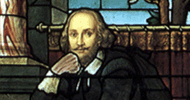

 |
 |
| Authorship | The Playhouse in Printing House | Publishers, Printers, and the Printed Book | ||||||||||||
| Publishers, Printers, and the Printed Book | |||
| Advertisements | ||
|
In the 1650s, publishers started inserting printed advertisements for other books in their plays. Humphrey Moseley was one of the most active publishers to do this, issuing regular lists of his publications and often printing the lists separately so they could be bound in multiple books. More usually, though, publishers would print small advertisements for books they had in their stock or they had recently published. The most ambitious, and comprehensive, advertisements were three catalogues that claimed to list all the plays ever printed: two in 1656 (by Edward Archer, and by Richard Rogers and William Ley) and one in 1661 (by Francis Kirkman) . The advertisements reproduced here are not nearly that comprehensive, but they do reveal the different types of books that were targeted at readers of plays. The advertisement from the last page of The Changeling (1653), one of Humphrey Moseley's many dramatic publications, lists "PLAYES newly Printed" and "PLAYES in the Press." One of the "PLAYES newly Printed" is Beaumont and Fletcher's Wild-Goose Chase, a play Moseley had not been able to find in time to include in the Beaumont and Fletcher Folio. Both of the "PLAYES in the Press" came out in early 1653. The advertisement in Thomas May's The Old Couple (1658) is informed by a different
advertising strategy. Rather than list only plays, as Moseley's advertisement
does, Samuel Speed promotes mainly non-literary books, which he organizes by
their formats (quartos, octavos, and duodecimos). The list does mention "Several
Romances, Poems and Playes," without adding any specific details about
them, but the bulk of the advertisement consists of books on religion, which
is hardly surprising since most books from the period were on religion. Thus,
whereas Moseley targeted readers of other plays for his new plays, Speed highlighted
publications that had nothing to do with drama. |
Images: Columbia
Rare Book & Manuscript Library
Technology: Columbia Center for New
Media Teaching & Learning